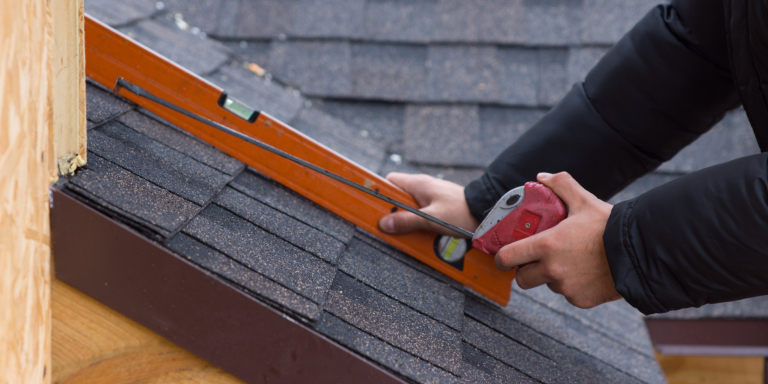
Roof pitch is a crucial aspect of any building's design that affects everything from the aesthetic appeal to the practical functionality of the roof. Understanding roof pitch is essential for anyone involved in home maintenance, renovation, or construction. In this blog, we explore what roof pitch is, how to calculate it, and why it is so important. Storm Master Exteriors, your trusted roofing company in Midland, MI, provides expert insights into the significance of roof pitch and how it influences various aspects of roofing.
Roof pitch describes the steepness or incline of a roof, typically quantified as the ratio of its rise (vertical height) to its run (horizontal span). It is expressed as a fraction, such as 4/12, meaning the roof rises 4 inches for every 12 inches it runs horizontally.
Calculating the pitch of a roof is straightforward: it involves measuring the vertical rise over a 12-inch horizontal distance from the roof. Knowing the pitch is essential for several aspects of construction and maintenance, such as material selection and installation techniques.
One of the primary reasons roof pitch is so important is its impact on weather resistance. Steeper roofs tend to shed snow and rain more effectively than flatter roofs, preventing water accumulation and the potential damage it can cause, such as leaks or structural weakening. In areas with heavy snowfall or rainfall, like Midland, having a properly pitched roof is essential for protecting the integrity of the building.
Roof pitch also significantly affects a building's overall aesthetic. Different architectural styles may require different pitches to achieve their characteristic look. For instance, a traditional Victorian home may feature a steeply pitched roof, while a modern home might incorporate a flatter design.
The pitch of the roof can influence the interior space of an attic or top floor. Higher pitches create more space, potentially allowing for additional living or storage areas under the roof. This can be particularly beneficial for homeowners looking to maximize their usable space without altering the footprint of their home.
Roof pitch can impact a home’s energy efficiency. Steeper roofs have more surface area and can result in higher heating costs during the winter if not well-insulated. However, they can also provide ample space for effective insulation. Selecting the right insulation and roofing materials in conjunction with an appropriate roof pitch can significantly enhance a home's energy efficiency.
Choosing the correct roof pitch involves considering both practical and aesthetic factors. It's crucial to comply with local building codes and community standards, which may dictate permissible pitches based on regional climate conditions and architectural styles. Consulting with a professional roofing contractor like Storm Master Exteriors can help ensure that your roof pitch aligns with both your personal preferences and practical needs.
The pitch of your roof is more than just an architectural characteristic; it plays a critical role in your home's weather resistance, aesthetic appeal, functional space, and energy efficiency. Whether you are building a new home or replacing an old roof, understanding the importance of roof pitch is crucial. If you're looking for professional roofing in Midland, MI, contact Storm Master Exteriors. Our team can handle all your roofing needs, ensuring your roof is not only beautiful but also structurally sound and efficient.
